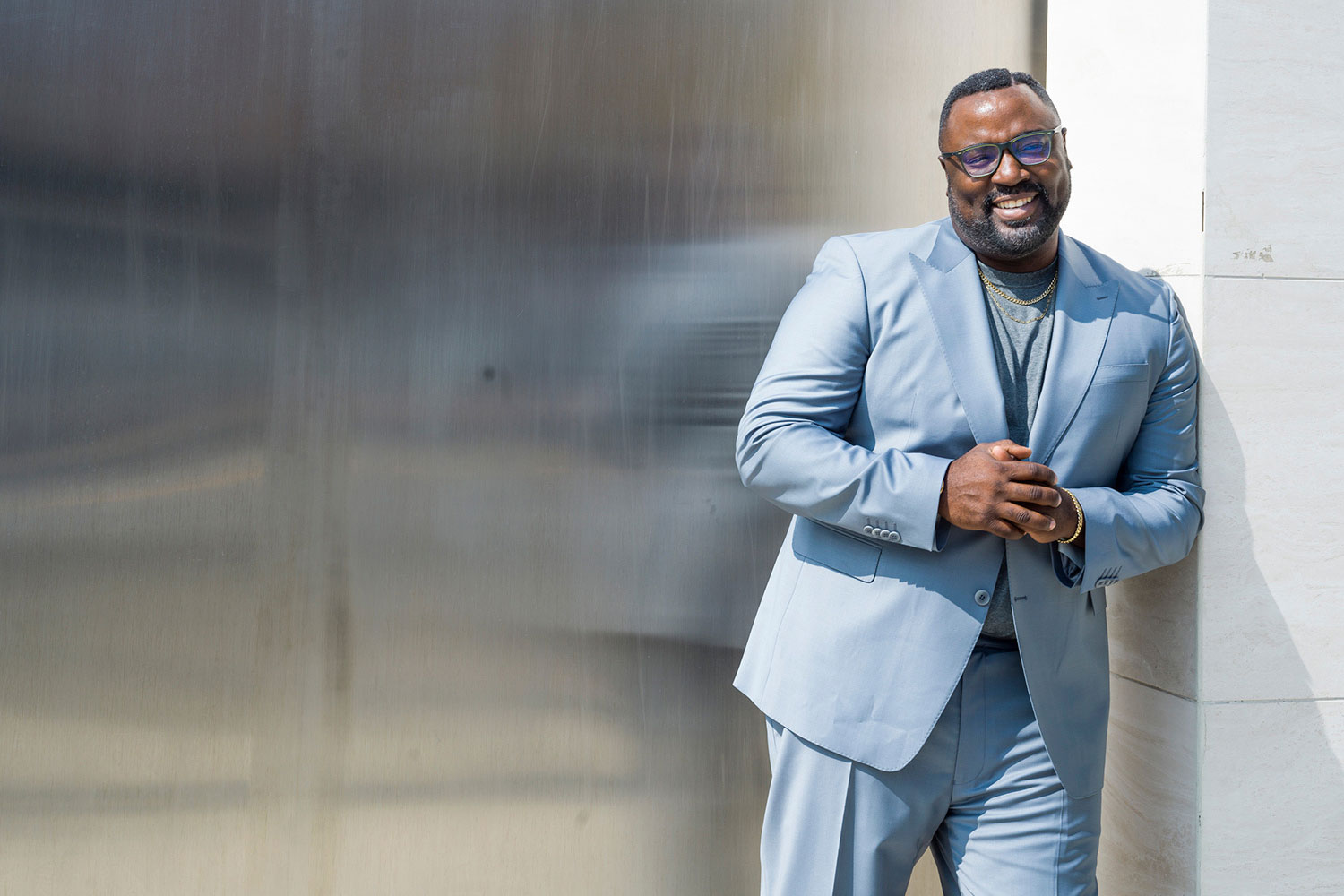In the middle of the 20th century, St. Clair Drake and Horace R. Cayton penned their landmark study about the emerging African American community of Chicago’s South Side. Black Metropolis not only covered the social ills present in a community challenged by discrimination but also considered the ways that Black Chicago had begun to generate its own self-sustaining institutions and a measure of political power that would need to be reckoned with across the city and the nation. Three-quarters of a century later, Bashir Salahuddin has taken up a similar set of investigations, albeit in an unexpected form: South Side, HBO Max’s brilliant comedy series.
“I think people were really shocked that we made a comedy,” says Salahuddin, the show’s cocreator. For some, a half-hour sitcom might seem like an odd or even inappropriate means to portray life among the poor and working-class residents who populate the show’s fictional 51st Ward (somewhere around Englewood). But South Side is an unqualified triumph of Chicagoan spirit, both resilient and always up for a good time.
A South Shore native (and Whitney Young alum), Salahuddin, who also plays the hilariously uptight Officer Goodnight, says one of the show’s aims is to “put the city in front of the camera.” Now entering its third season, South Side details and celebrates the minutiae of Black Chicago that are so central to the identity of those communities and yet so easily overlooked by the rest of the city. From stepping and spades to funerals and nepotistic politics, South Side offers a complex and loving portrayal of sections of the city that are often met with fear and loathing and used as a stand-in for white anxiety about urban spaces. As it effortlessly cuts across the class and generational divides of Black Chicago, the series manages depth without sacrificing laughs.
Even as it veers into the comically absurd, the series still feels true to life, partially because it uses local actors and amateurs onscreen (including a handful of my former elementary and high school classmates). “Every Black person [in Chicago] feels like the episode would be a little better if they were in it,” quips Salahuddin. “And I don’t mind it because sometimes we do put them in it.” That’s by design: While so many talk about the South Side, Salahuddin’s creation talks with the South Side — and allows South Siders to do the talking. “Chicago is such a proud Black city,” Salahuddin says. And in South Side, it shows.



